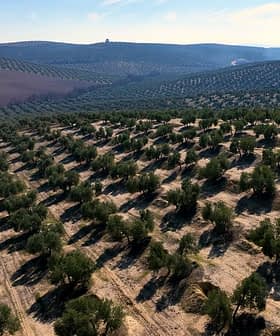
New rules aimed at making the information on olive oil labels easier to read and understand will apply from late next year in the European Union.
Under a draft measure given the green light on November 26 by a European Commission committee, the EU marketing standards for olive oil (regulation 29/ 2012) will be amended to require that:
- all the information that has to appear on olive oil packaging must be in the main field of vision in a uniform body of text. The Commission says this should stop a misleading practice sometimes seen whereby some information, such as about the quality of the oil, appears in a smaller font;
- the back label of olive oil bottles must indicate that they should be stored in a cool, dark place. This aims at helping consumers maintain the quality of their oil longer;
- the harvest year may only be stated on the label if all the olive oil is from that harvest. This is said to be to enable consumers to ensure product freshness;
- EU member states must strengthen compliance checks — based on risk analysis — as well as sanctions, and send more detailed annual reports to the Commission on these checks and the outcomes.
These rules — part of the EU olive oil action plan — will generally apply from 13 December 2014, though a new, more thorough format for reporting on compliance checks to the Commission will apply from 2016.
Minimum font size covered by widers laws on food information for consumers
Olive oil is also subject to EU regulation 1169/2011 on provision of food information, which set new labeling requirements, most of which will also apply from December 13, 2014.
One of its key provisions — aimed at improving the legibility of food labels — is that all the information that must appear on a label must be of a minimum font size of 1.2mm for the height of an ‘x’, or 0.9mm where the pack’s surface area is less than 80 cm².
Ban on cruets now off the agenda
Meanwhile, the provisions passed on November 26 by the Commission’s Management Committee for the Common Organisation of Agricultural Markets are understood to have had the backing of all member states except Austria, Estonia, Germany, Hungary, Latvia and Sweden, which abstained.
Similar provisions — but with the major difference of the inclusion of a ban on refillable olive oil bottles from restaurant tables — were put to the vote in the same committee back in May and failed to gain the necessary majority. The Commission had planned to nevertheless use its power to implement them but later that month put them on ice amid an outcry over the refillable bottle issue.
European Commissioner for Agriculture Dacian Cioloş said then he would consult with stakeholders to find an alternative way to protect consumers from fraud. As both Italy and Spain have since moved to follow Portugal in banning refillable containers in their hospitality sectors, the EU-wide proposal is understood to have been permanently withdrawn as the Commission considers much of EU olive oil consumption will now be covered by such a step at national level.
Other differences are that the draft measures in May specified bigger minimum font sizes for mandatory label information — for example 4mm for a package volume of more than 100ml — whereas the new ones defer to the food information labeling rules — and the changes had initially been due to apply from the start of 2014.








